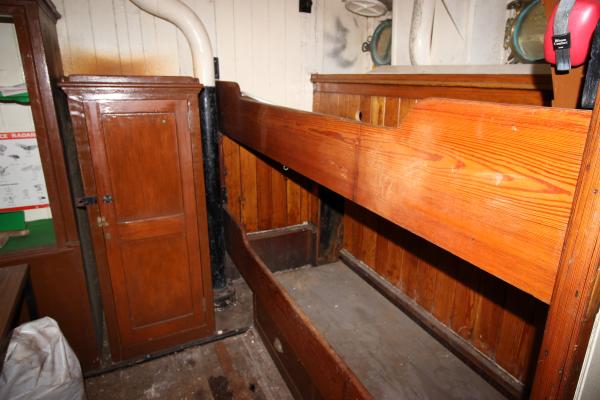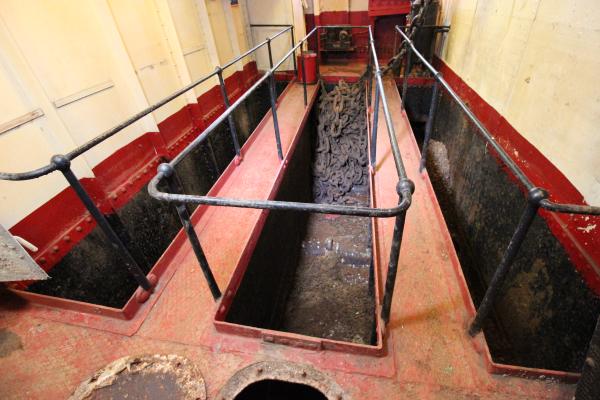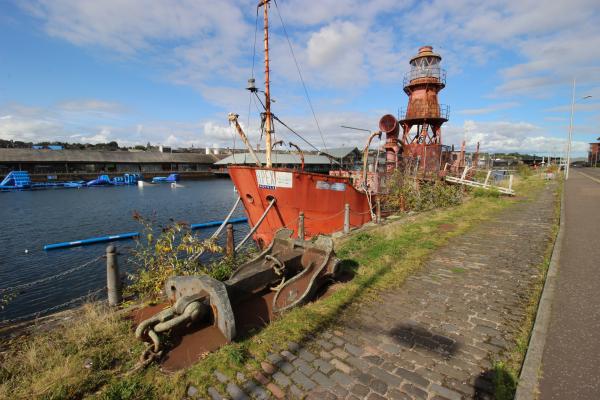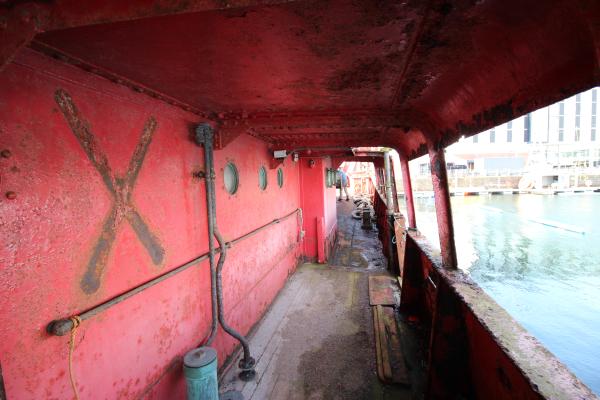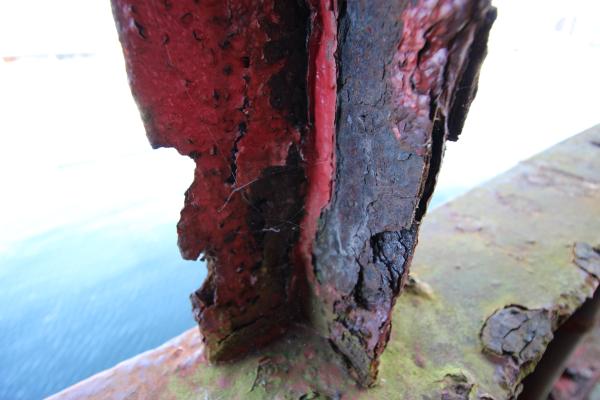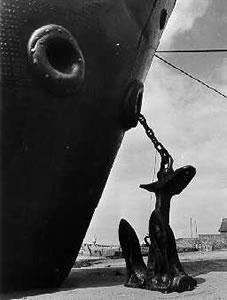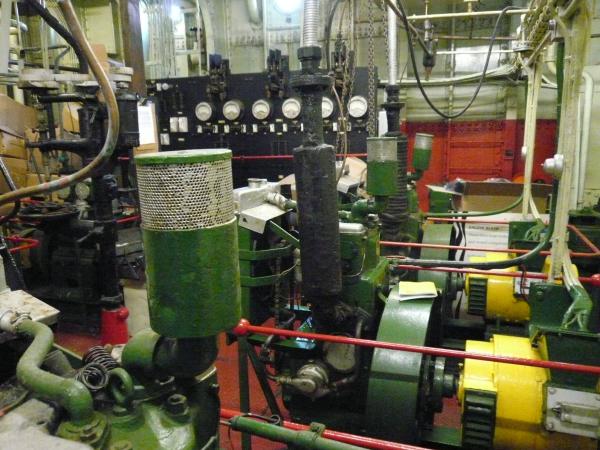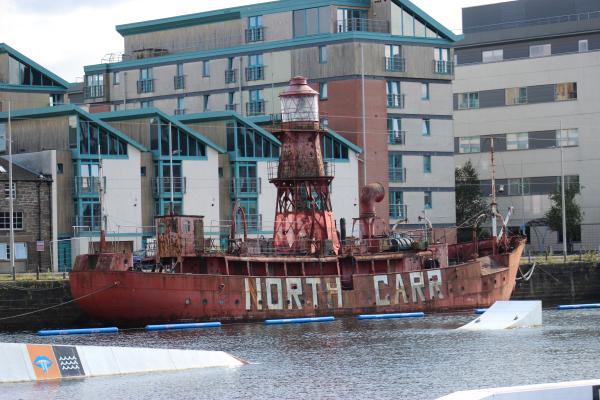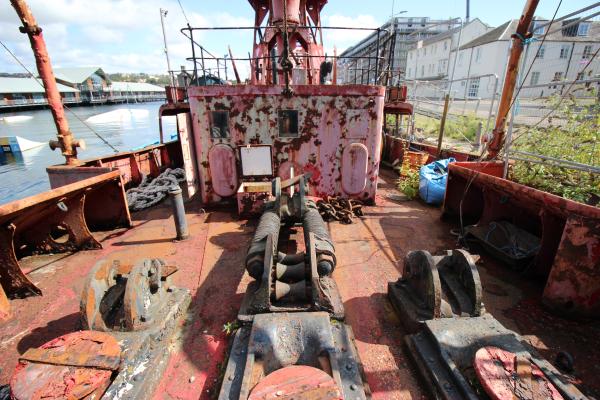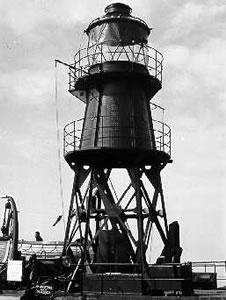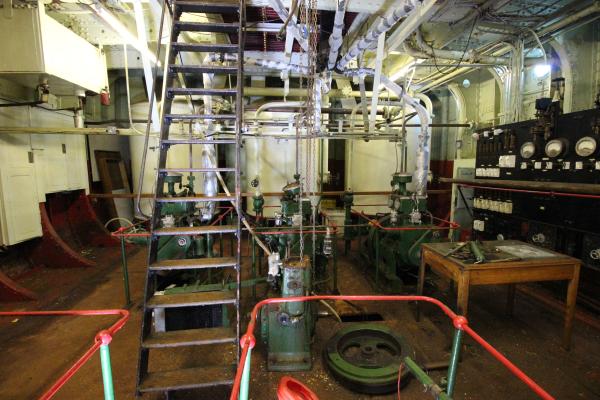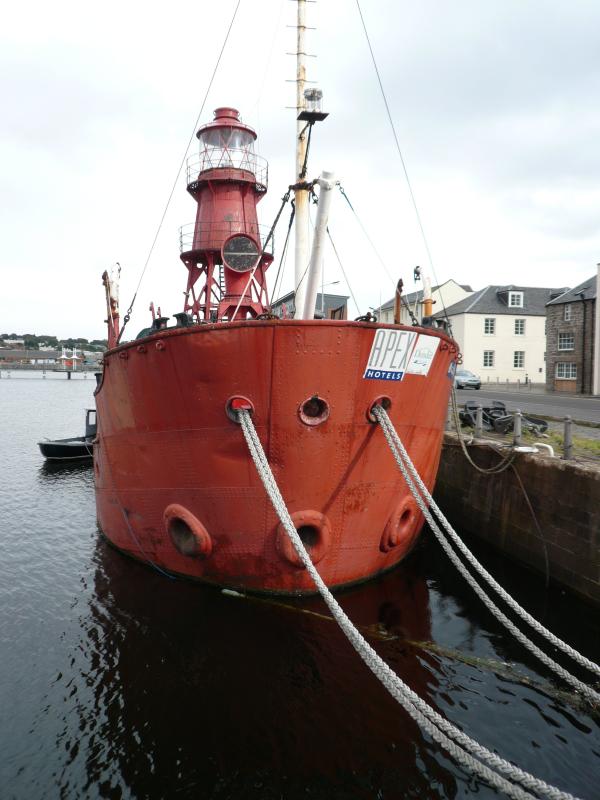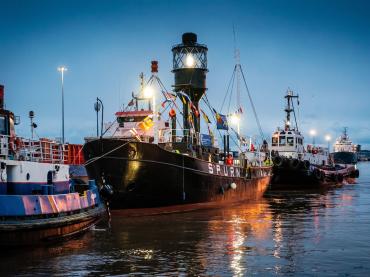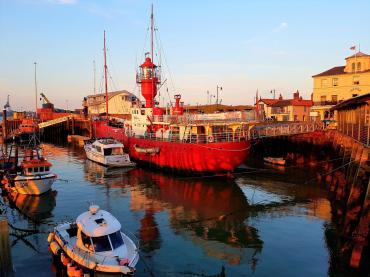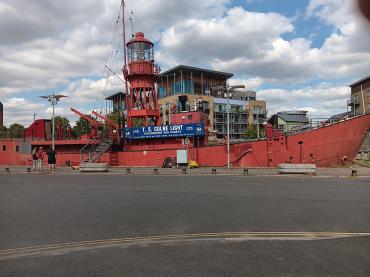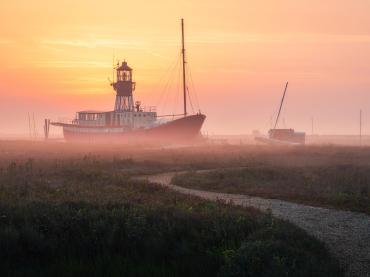

Details
Construction
Dimensions
History
Light Vessel NORTH CARR cost £15,430 to build and was on station at North Carr from 1933-1975. When she was being fitted out, her fog horn was tested only three quarters of a mile off the coast and this called outrage in Edinburgh. The large horn on deck had to be turned away from the wind so that the sound carried. If the ship moved, because of tides and currents, the man on watch had to run forward and turn the fog horn, by means of the wheel beside it and run back to the stern of the ship before he was deafened by it going off again.
During World War II, the lightship was moved between the Mull of Kintyre and the Mull of Galloway as a convoy guide for ships entering Clyde. Her light was only lit at pre-arranged times when ships were passing.
In 1952, a major refit was undertaken, installing new diesels and generators. Toilets were also installed at this time to replace those on deck. A radio beacon was installed in 1954 and two years later the Watch House was built. This was heated two years after by leading through it the chimney from the stove in the officers' saloon.
On 8 December 1959, the coast of Scotland was battered by one of the worst gales for many years. About 2am, North Carr broke her moorings and, drifting northwards, sent out a distress signal. The lifeboats at Anstruther, Dunbar and Arbroath were unable to leave harbour, but the Broughty Ferry was more sheltered and the lifeboat, the Mona, was launched to try and help. In the morning, the Mona and bodies of seven of her crew were found lost on the beach at Buddon Ness. The light vessel crew were eventually rescued by RAF helicopter. A plaque on the lightship commemorates the loss of the Mona and her crew.
North Carr was sold out of service in 1975 and replaced by an automatic beacon on the rocks and a low light at Fife Ness. She was laid up at Leith, intended for scrap. The following year she was purchased by N.E.Fife D.C. for display at Anstruther and in 1977 opened to the public. In 1989 financial and technical problems resulted in closure. Reopened in 1992, then sold in 1995 to Dundee City Council and again in 2010 to Taymara (Tay Maritime Action) where she was put on display in Victoria Dock, Dundee.
Update, November 2023: Taymara has issued an intention to deconstruct North Carr and asked any interested parties to get in touch before 5 January 2024.
Significance
1. What is the vessel’s ability to demonstrate history in her physical fabric? Evidence for designs, functions, techniques, processes, styles, customs and habits or uses and associations in relation to events and people. How early, intact or rare these features are may impact on significance.
North Carr light vessel was designed by DA Stevenson, one of a family of lighthouse engineers, and is of iron and steel construction, riveted throughout. She has retained a high level of originality and remains in the same configuration as when she ceased service, including the radio beacon which was installed in 1954 and the watch house from 1956. Her onboard windlass and mooring arrangements are still in place and equipment remains as fitted or in accordance with alterations during service. Her original oil-fired galley stove, water pump, radio, electrical and firefighting equipment, fridge, battery room, crew’s quarters, furniture and master’s accommodation all survive. The engine room machinery has been kept, including the original switchboard. Her two original ship’s lifeboats also remain with the vessel. Advances in technology are reflected in innovations across her service life in terms of radio communications, the transition from paraffin fuel to diesel of her three Russell Newbury motors, clarity of the vessel’s light and installation of internal toilets. A steam boiler was fitted to blow weed from the sea water engine cooling inlets.
2. What are the vessel’s associational links for which there is no physical evidence?
Associations with people or places. Off-ship research.
Designed for the Commissioners of the Northern Lighthouse, built on the Clyde by A&J Inglis and launched in 1933, North Carr has significant associations for Scotland where she is believed to be the last remaining light vessel and one of only two which served in Scottish waters. With 36 years of service on station, she presents a tangible link with the history of pilotage in the Tay Estuary dating back to the 16th Century and the dangers to ships from the rocks at Fifeness. She played a vital role in the Second World War, when she was temporarily moved to act as a guide for ships entering the Clyde, safeguarding the Atlantic convoys and the great Cunard liners Queen Elizabeth and Queen Mary, bringing as many as 15,000 American troops at a time for the invasion of Europe. In 1942, she marked the outbound route for 334 ships carrying 70,000 men bound for Operation Torch, the Anglo-American landing in North Africa. In 1943, the outbound assault convoy for the Allied invasion of Sicily, Operation Husky, passed by the lightship. She also saw her share of enemy action while in the North Channel, notably in January 1945 when the German u-boat U-1172 was hidden underneath her whilst torpedoing a tanker and aircraft carrier. North Carr has particularly strong links to Edinburgh and East Neuk of Fife from where her crew members were recruited, and which fell within range of her horn. She also offers a physical memorial to the crew of the Broughty Ferry lifeboat, Mona, who tragically lost their lives in 1959 whilst trying to secure her, after the anchor cable snapped and she drifted off station in a storm. Having now been berthed in Dundee since 1995, she has connections with the waterfront area, as well as with Anstruther, where she was based as a static museum between 1976 and 1993. North Carr is well documented with photographs and handwritten accounts held by the Northern Lighthouse Board Archive. The original mirror and prisms from her light are now in museum storage. She has been recorded on the National Register of Historic Vessels since 1996 and is a member of the National Historic Fleet.
3. How does the vessel’s shape or form combine and contribute to her function?
North Carr has a strong hull constructed of iron below and steel above the waterline which was designed to withstand the North Sea weather and sea conditions. Painted bright red and equipped with a light situated 40 feet above sea level and a directional foghorn with a range of ten miles, she was fit for purpose as a warning to seafarers. Today, her hull shape, colour and dominating light tower has a popular appeal, being associated with saving lives at sea. Her engine room space was given over to three generators which powered the light, and three compressors for working the foghorn. Another important aspect was the chain locker, which housed two spare cables, as well as the slack from the chain of the anchor which held her in place. She was crewed by seven men at any one time with the galley acting as a focal point for life onboard. The separations between the crew quarters and master’s accommodation reflect class distinctions of the era. North Carr is currently located in the Victoria Dock at Dundee in static preservation.
Author:
National Historic Ships UK, 21 November 2023
Key dates
-
1933
Built by A. & J. Inglis of Glasgow as a lightship for the Northern Lighthouse Board
-
1933-1939
Served as a Lightship at Carr Rocks (North Carr)
-
1939-1945
The station was moved and placed between the Mull of Kintyre and the Mull of Galloway as a convoy guide for ships entering Clyde
-
1945-1975
Again served as a lightship at Carr Rocks
-
1952
A major refit was undertaken, installing new diesels Moreand generators
-
1954
Radio beacon installed
-
1956
Watch House was built
-
1958
Broke her moorings and the Broughty Lifeboat and all her crew were lost in the attempted rescue. The light vessel crew were eventually saved by RAF helicopter
-
1975
Sold out of service after being replaced by an automatic buoy and was laid up at Leith
-
1976
Purchased by N.E. Fife D.C. for display at Anstruther
-
1977
Opened to the public
-
1989
Financial and technical problems resulted in closure
-
1992
Re-opened to the public
-
1994
Moved to Dundee to serve as the Headquarters and Training Vessel for the Maritime Volunteer Service’s Tay Unit
-
1995
Sold to Dundee City Council and berthed in Victoria Dock astern of the frigate UNICORN
-
2008
A sustainability grant of £2,300 was awarded for signage by NHS-UK
Grants
-
2007
A sustainability grant of £2,300 was awarded for signage by National Historic Ships out of the Strategic Development Fund
-
2004-2005
Heritage Lottery Fund grant aided 90% of the painting of the superstructure at a cost of around £55,000. Source: Taymara, Sep 13
Sources
Brouwer, Norman J, International Register of Historic Ships, Anthony Nelson, Edition 2, 1993
Martin, Paula, North Carr Lightship: A Maritime Experience, North East Fife District Council, 1992
Williams, Peter, Leading Lights: Light Vessel Directory, Peter Williams Associates, pp57, Volume 1, Edition 3, 1995
St Andrews Citizen: Lightship may not be only vessel bound for new home, 18 August 1995
Own this vessel?
If you are the owner of this vessel and would like to provide more details or updated information, please contact info@nationalhistoricships.org.uk

